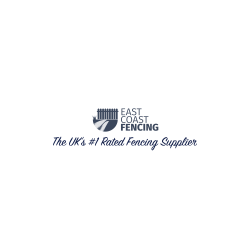Artificial Grass vs The Real Thing: Making the Right Choice for Your Garden

When it comes to creating a lush, inviting garden, homeowners are faced with a key decision: to choose artificial grass or opt for natural turf. Both options offer distinct advantages, but they also come with their own set of drawbacks. In this comprehensive guide, we will explore the pros and cons of artificial grass and real turf to help you make an informed decision that best suits your lifestyle, budget, and green aspirations.
The Case for Artificial Grass
Low Maintenance
One of the most appealing factors of artificial grass is its low maintenance. Unlike real turf, it does not require regular watering, mowing, or fertilising to stay green and vibrant. This can significantly reduce your household water usage and eliminate the need for harsh chemical fertilisers and pesticides, which can be detrimental to the environment.
Year-Round Green
Artificial grass provides a perfectly manicured lawn throughout the year, regardless of the weather conditions. It's resistant to wear and tear, making it a great option for high foot traffic areas or sports activities. For those looking to enjoy a pristine garden without the seasonal upkeep, artificial turf can be an attractive solution.
Allergy Reduction
For individuals who suffer from grass pollen allergies, artificial grass can be a blessing. It offers the opportunity to enjoy your garden without the worry of allergy-induced discomfort, providing a safe and comfortable outdoor space for the whole family.
Cons of Artificial Grass
Despite its benefits, artificial grass does have its downsides. It can get hot in direct sunlight, potentially making it uncomfortable to walk on during peak summer months. Additionally, it does not contribute to local ecology as natural grass does; it doesn't produce oxygen, nor does it offer a habitat for garden wildlife.
The Beauty of The Real Thing
Natural Ecosystem
Real grass plays a critical role in the local ecosystem. It contributes to carbon dioxide absorption, produces oxygen, and supports a wide range of wildlife, from beneficial insects to birds. For environmental enthusiasts, the ecological benefits of maintaining a natural lawn can outweigh the maintenance required.
Cooler Environment
Natural turf acts as a fantastic natural coolant for your garden and the surrounding area, significantly reducing ambient temperatures. This can be especially beneficial during hot summer months, where a grass lawn can be noticeably cooler than artificial turf or paving.
Durability and Self-Repair
Real grass has the remarkable ability to repair itself and bounce back from wear and tear. With appropriate care, it can sustain heavy foot traffic and recover well, ensuring your garden remains a resilient, green space.
Challenges with Real Grass
Maintaining a natural lawn requires consistent effort and resources. Regular watering, mowing, and lawn care are necessary to keep it healthy and aesthetically pleasing. Additionally, seasonal changes can affect its appearance, with potential for it to turn brown during droughts or lose its lushness in winter.
Making the Decision
When choosing between artificial grass and real turf, consider the following factors:
- Lifestyle and Usage: Assess how you intend to use your garden. High-traffic or pet-friendly gardens may benefit from the durability of artificial grass, whereas environmental enthusiasts might prefer natural turf for its ecosystem benefits.
- Maintenance Commitment: Reflect on the amount of time and resources you are willing to dedicate to lawn care. If gardening is a hobby you enjoy, a natural lawn could be satisfying to maintain. Alternatively, if you prefer a low-maintenance solution, artificial turf could be your best bet.
- Environmental Considerations: Contemplate the environmental impact of your choice. While artificial grass offers water conservation benefits, natural grass supports biodiversity and helps combat climate change through carbon sequestration.
- Budget: Initial installation costs for artificial grass can be high, but it may prove cost-effective in the long run due to minimal maintenance expenses. Conversely, real turf has a lower upfront cost but will incur ongoing maintenance expenses.
In conclusion, the decision between artificial grass and real turf is a personal one, influenced by individual preferences, lifestyle, and environmental considerations. By weighing the pros and cons of each option, you can choose a solution that not only looks great but also aligns with your values and meets your garden's needs.














Leave a Comment